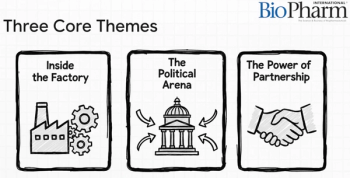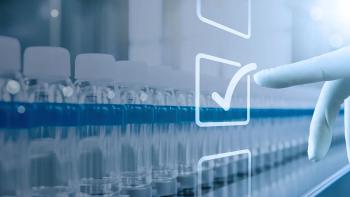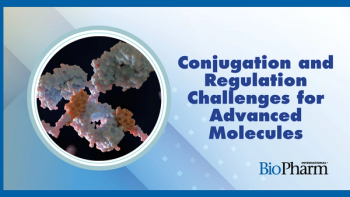
- BioPharm International July August 2025
- Volume 38
- Issue 6
- Pages: 12–15
Single-Use Technology: Transforming Biomanufacturing Today and Tomorrow
Advanced technology platforms optimize the efficiencies and sustainability of single-use bioreactors, setting the scene for the next evolutionary step in biomanufacturing.
Stainless-steel systems (SSSs) have been foundational to the bioprocessing industry, but their rigidity increasingly clashes with modern, often unpredictable demands for varying quantities of biologics. Single-use bioreactors (SUBs) have emerged as modular, rapidly deployable, scalable alternatives that align with the agility demanded by 21st-century biomanufacturing challenges.
Numerous authors have demonstrated the potential of SUBs for improved efficiencies, flexibility, cost-effectiveness, reduced contamination risks, and faster production cycles (1–4). Additionally, single-use technologies (SUTs) have been shown to offer better efficiency and sustainability profiles, owing to reduced requirements for the sanitization and cleaning processes that typically burden traditional facility (5,6).
Due to the industry’s past dependence on traditional SSSs and misconceptions associated with the term “single use,” various biases about SUTs exist in the biopharmaceutical industry. These biases include claims that SUTs are unsuitable for large-scale production, entail higher manufacturing costs, and are not environmentally friendly.
In fact, with their flexibility, reduced contamination risks, and smaller environmental footprints, SUTs are now widely recognized as effective solutions to many of today’s commercial manufacturing challenges. The continuous advancements in cell lines, expression systems, and culture processes have decreased the required bioreactor volume, enabling smaller SUBs to be adopted for commercial manufacturing. It is estimated that 80% of commercial biologics don’t require bioreactors larger than 10,000L (7). Moreover, with the rise of big data and the Internet of Things (IoT), and as real-time data interpretation has become increasingly feasible, SUBs are integrating advanced technologies to unlock even further advantages. This article explains how advanced bioprocessing technology platforms can optimize the efficiencies and sustainability of SUBs.
Advanced technology platforms
The reliable collection and interpretation of large volumes of bioprocessing data were once significant challenges. Today, cyber-physical systems facilitate automated analysis and systematic storage of data, ultimately enabling continuous processing and optimization of complex biomanufacturing processes. In the biopharmaceutical industry, this advancement is realized through the integration of systems via advanced bioprocessing technology platforms. During the past few years, internal data have been collected from bioprocesses applying two platforms to assess their impacts on process efficiencies and sustainability.
The first, which has been described in four peer-reviewed publications (8–11), is an ultra-high productivity integrated platform for continuous biomanufacturing (WuXiUP, WuXi Biologics). It combines intensified continuous cell culture with a continuous or hybrid downstream process employing direct product capture column chromatography to generate better purification yield. Driven by process intensification, the platform enables ultra-high productivity with continuous processing, improved product quality compared with traditional fed-batch, and shortened culture duration compared with conventional perfusion processes.
The other technology platform is a high-productivity bioprocessing solution designed to meet commercial supply demands (WuXiUI, WuXi Biologics) (12,13). It enhances cost efficiency through reduced manufacturing cost of goods (CoGs) while offering production performance enhancement under a fed-batch mode hybridized with limited media exchange cycles through perfusion. Besides its capability to boost productivity for mammalian-based modalities, the platform ensures process robustness in large-scale manufacturing while achieving comparable product quality for efficacy and safety assurance.
Cost-efficiency
Compared with SSSs, SUTs have a well-established lower up-front capital investment, shorter construction period, and reduced indirect costs (e.g., labor and cleaning costs) (1–4). It has also been suggested that SUTs have a higher productivity compared with SSSs due to a shorter turn-around time.
Internal data from more than 300 large-scale batches with a 99% success rate confirm historical reports that biomanufacturing costs with SUTs continue to compare favorably with those of SSSs, while the industry average success rate is around 95%. By adopting a scale-out strategy—combining multiple SUBs, such as 4000L and 5000L units, in parallel within a single production batch to achieve large-scale production—manufacturing costs compare favorably to those of SSSs. These data suggest baseline cost savings of around 10% for equivalent production volumes, with potential additional savings of up to 30% when integrated with advanced bioprocessing technology platforms.
The high-productivity bioprocessing platform has a proven record of 3- to 6-fold productivity gains across multiple mammalian-based modalities (Figure 1). Often applied jointly, intensified downstream processing further elevates downstream processing capability with increased loading capacities at critical unit steps, which compresses downstream processing durations and reduces raw material uses. Collectively, the intensified upstream and downstream synergy can reduce drug substance CoGs by an estimated 60–80% compared to traditional fed-batch processes in SUBs, while boosting drug substance productivity by up to 500% per batch.
The ultra-high productivity integrated platform for continuous biomanufacturing, which can achieve up to 20 times greater productivity compared with traditional fed-batch, has also demonstrated notable improvements in cost efficiency. This platform greatly accelerates biologics development and manufacturing timelines and reduces CoGs, thereby improving the accessibility of biopharmaceutical modalities, including those previously limited by severe quality challenges (Figure 2).
Cell culture productivity can be increased to 20 to 120 g/L (a 5- to 20-fold improvement over comparative traditional fed-batch culture), and the data gathered suggests that the high-quality protein enables a downstream yield of 80 to 90%, several fold higher than that of the fed-batch system in SUBs.
End-to-end integrated, continuous drug substance manufacturing at pilot scale—from perfused cell culture to final ultrafiltration/diafiltration (UF/DF) pool—exemplified the benefits of this platform.An average daily production rate of 6.5 g/L of a monoclonal antibody was obtained during the 17-day production phase, leading to a notably high cumulative volumetric productivity of 110 g/L in the 24-day continuous cell culture process.In the downstream process, the overall yield—from protein A capture to UF/DF—reached 86%.The integrated downstream unit operations resulted in maximized operational efficiency and minimized facility footprint.
These internal data show that, compared with conventional systems, implementation of both advanced bioprocessing technology platforms in SUBs enhanced yield and quality, while resulting in markedly lower drug substance manufacturing CoGs.
Manufacturing efficiency and flexibility
Compared with SSSs, SUTs bring process efficiencies via reduced time needed for factory construction, cleaning, and general maintenance. They are increasingly recognized as an effective solution to supporting flexible current good manufacturing practice manufacturing, while enabling efficient and rapid adjustment of production schedules and volumes.
In addition to faster set-up and reduced operator handling, SUBs are associated with decreased cleanroom requirements and a more controlled environment that helps reduce variability. This leads to more consistent and predictable outcomes, which face fewer regulatory challenges due to lower risks of contamination compared with SSSs. If SUTs are employed as part of the closed system, even more advantages can be achieved through reduced cleaning and validation times, further reduced set-up times, and further reduced times to operate or oversee equipment (13).
Until fairly recently, SUB volumes were limited by pressure challenges caused by the weight of the liquid medium, as well as handling constraints (14). The capacity of stainless-steel bioreactors used to be significantly larger than that of single-use alternatives. However, technological advances have enabled SUBs to become commercially available at higher working volumes of 4000L to 6000L, offering an improved balance between flexibility and CoGs.
For production scenarios requiring volumes beyond the limits of even the latest SUBs, scale-out strategies can be implemented flexibly (15). For example, a facility housing four 4000L SUBs could perform manufacturing scales of 4000L, 8000L, 12,000L, or 16,000L, for different products at clinical or commercial stages. SUBs can also be integrated with advanced bioprocessing technology platforms to further enhance cost efficiency and sustainability.
This type of flexibility is becoming increasingly important as managing capacity utilization is now one of the primary challenges in the biopharmaceutical industry. Oversized production capacity leads to low utilization rates and inflated manufacturing costs, while undersized capacity risks drug shortages. Scale-out strategies address these challenges by eliminating risks for non-linear scale-up and enabling rapid expansions (or reductions) of capacity in direct response to shifts in demand. These eliminations facilitate contractual and financial flexibility, while accommodating emergency production needs and enabling a broader range of process types.
Sustainability
Sanitization requirements for biologics manufacturing place a substantial environmental burden on traditional facilities. Compared with SSSs, multiple studies indicate that SUTs can reduce energy use by approximately 38% during use and 32% across all life cycle stages, water consumption by up to 70%, and CO2 emissions by about 40%, thanks to smaller facility footprints and a reduced need for cleaning cycles (5).
These environmental benefits can be further amplified with the application of advanced bioprocessing technology platforms. Compared with traditional bioprocessing, continuous manufacturing, achieved with the ultra-high productivity integrated platform, has been shown to reduce resource consumption and waste generation by minimizing equipment and facility footprints. Similarly, the high-productivity bioprocessing platform has also demonstrated more efficient media use, reduced waste output, and smaller facility space requirements for the production line, collectively reducing the product carbon footprint per gram of protein product by up to 80%, compared with traditional fed-batch SSSs.
Figure 3, which is based on data obtained from applying the high-productivity bioprocessing platform to single-use bioreactor systems, demonstrates how application of the platform can reduce the environmental impact of bioprocessing.
Conclusion
With emerging trends, such as on-demand production and smaller quantities of personalized medicines for smaller patient groups, the biopharmaceutical industry is shifting away from the traditional approach that relies solely on large-scale SSSs. These legacy systems, once the backbone of biomanufacturing, are increasingly ill-suited to the flexibility and responsiveness required by modern therapeutic demands. The biopharmaceutical industry is already transitioning from large-volume, single-product to small-volume, multi-product facilities.
This shift aligns with the advantages of SUBs—efficiently and quickly adjusting production plans and capacity by increasing or decreasing the number of bioreactors. This approach enables large-scale production at relatively small volumes, avoiding the technical and regulatory challenges typically associated with process scale-up.
The next critical step is the widespread adoption and integration of advanced bioprocessing technology platforms that improve the quality and productivity compared with traditional systems. These advanced platforms deliver significant cost and time savings while enhancing sustainability across the industry, ultimately increasing patient access to essential medications worldwide when compared with traditional platforms.
References
- Hernandez, R. Top Trends in Biopharmaceutical Manufacturing: 2015. Pharmaceutical Technology 2015 39(6).
- Goldstein, A.; Molina, O. Implementation Strategies and Challenges: Single-use Technologies. PepTalk Presentation, 2016.
- Biopharm. MAb Manufacturing Today & Tomorrow. Press Release, May 14, 2014.
- Jacquemart, R.; et al. A Single-use Strategy to Enable Manufacturing of Affordable Biologics. Comp Struct Biotech J 2016 14:309–318.
- Cytiva. An Environmental Life Cycle Assessment Comparison of Single-Use and Conventional Bioprocessing Technology. First published November 2013, 9pp.
- United Nations Global Compact. 20 Case Examples for 20 years. 2024.
- BPI Editors. Biomanufacturing Supply and Demand: Industry Trends and Projected Impacts. BioProcess Int, July 31, 2024.
- Zhou, H.; et al. Improving an Intensified and Integrated Continuous Bioprocess Platform for Biologics Manufacturing. Biotechnol Bioeng 2021 118(9):3618-3623.
- Qin, YJ.; et al. Productivity and Quality Improvement for a Symmetric Bispecific Antibody through the Application of Intensified Perfusion Cell Culture. Antib Ther 2022 5(3):111-120.
- Yan, G. ; et al. Biotechnol Prog 2023 e3405.
- Zheng, X. ; et al. A Comparison of Different Intensified Upstream Processes Highlighting the Advantage of WuXi Biologics’ Ultra-high Productivity Platform (WuXiUPTM) in Improved Product Quality and Purification Yield. Biotechnol Prog 2024 40(6)e3487.
- Xiang, S.; et al. Developing an Ultra-Intensified Fed-Batch Cell Culture Process with Greatly Improved Performance and Productivity. Biotechnology and Bioengineering 2024;121(2):696–709.
- Editor. Closed Systems in Biomanufacturing Offer a Variety of Benefits. Cell Culture Dish, April 15, 2015.
- Kai. Single-Use Technologies Enable Biologic Scaling. Contract Pharma, May 3, 2023.
- Sargent B. Scale-Out Biomanufacturing–A Paradigm Change to Scale Up. Cell Culture Dish, Jan. 24, 2018.
About the author
Chris Chen is the CEO of WuXi Biologics. Dr Chen served on the International Board of Directors for ISPE and holds a PhD in Chemical Engineering from the University of Delaware.
Article details
BioPharm International®
Vol. 38, No. 6
July/August 2025
Pages: 12–15
Citation
When referring to this article, please cit it as Chen, C. Single-Use Technology: Transforming Biomanufacturing Today and Tomorrow. BioPharm International 2025 38 (6).
Articles in this issue
Newsletter
Stay at the forefront of biopharmaceutical innovation—subscribe to BioPharm International for expert insights on drug development, manufacturing, compliance, and more.




